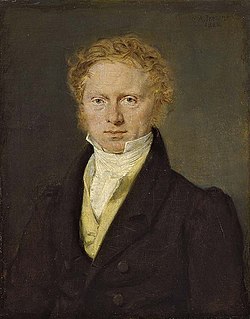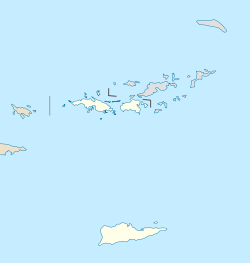
The University Botanical Garden is Norway's oldest botanical garden. It was first established in 1814 and is administrated by the University of Oslo. It is situated in the neighborhood of Tøyen in Oslo, Norway.

Frederiksted is both the town and one of the two administrative districts of St. Croix, U.S. Virgin Islands. It is a grid-planned city, designed by surveyor Jens Beckfor, originally to 14x14 blocks but built 7x7 to enhance the island commerce in the 1700s. Frederiksted has fewer than 1,000 people in the town proper, but nearly 10,000 in the greater western side of the island. Christiansted is about 30 years older but commerce was limited by its natural, shallow protective reef. Frederiksted was built in the leeward side of the island for calm seas and a naturally deep port. It is home to Fort Frederik, constructed to protect the town from pirate raids and attacks from rival imperialist nations and named after Frederick V of Denmark, who purchased the Danish West Indies in 1754.

Hassel Island is a small island of the U.S. Virgin Islands, a United States territory located in the Caribbean Sea. Hassel Island lies in the Charlotte Amalie harbor just south of Saint Thomas and east of Water Island, with which it is part of the sub-district of Water Island.

Fort Frederik, also known as Frederiksfort, is a U.S. National Historic Landmark in Frederiksted, United States Virgin Islands. It was built between 1752 and 1760 by Denmark-Norway to defend the economic interests of the natural deep water port of Frederiksted and to ward off pirates. It has red and white painted walls, making it quite different then yellow and white of Fort Christiansværn on the other side of the island. It is located at the north end of Frederiksted, in St. Croix, south of the junction of Mahogany Road and VI 631. It should not be confused with Frederiks Fort, Fortberg Hill, on St. John, which is also listed on the National Register of Historic Places.

Frederiksted Historic District is a historic district located on the island of Saint Croix in the United States Virgin Islands. It was listed on the U.S. National Register of Historic Places in 1976.

Catherineberg Sugar Mill Ruins is an historic site located in the Virgin Islands National Park, east of Cruz Bay on Saint John, U.S. Virgin Islands. The ruins are an example of an 18th-century sugar and rum factory.
Events from the year 1831 in Denmark.
Events from the year 1724 in Denmark.
Events from the year 1752 in Denmark.

Corselitze, or Korselitse, is a manor house on the island of Falster in the south-east of Denmark. The Neoclassical house was built in 1777 by Johan Frederik Classen who at the time of his death founded Det Classenske Fideicommis which owns the estate today.

Oremandsgaard is a manor house and estate located seven kilometres south of Præstø, Vordingborg Municipality, in southeastern Denmark. The estate traces its history back to the 14th century, but the current main building is from 1933. Oremandsgaard was acquired by Alfred Hage in 1861 and is currently owned by the fifth generation of the Hage family. It is one of the oldest organic farms in Denmark and plays host to an annual chamber music festival.

Peter Anton Alfred Hage was a Danish merchant, politician, landowner and philanthropist.

Christopher Friedenreich Hage, was a Danish merchant on the island of Møn. He was the father of Alfred Hage.

Hans Puggaard was a Danish merchant and shipowner who founded H. Puggaard & Co. in 1813. The company became a leading wholesaler of grain and was also active in the market for import of colonial goods such as coffee and especially sugar.

The Danish Constituent Assembly is the name given to the 1848 Constitional assembly at Christiansborg Palace in Copenhagen, that voted the Danish Constitution and formalized the transition from absolute monarchy to constitutional democracy. It consisted of members of which 114 were elected by the people, 38 were appointed by the king and the rest were government ministers.

The 1919 South American Championship Final was the final match to determine the South American Cup champion. It was held on May 29, 1919, in Estádio das Laranjeiras of Rio de Janeiro.
















